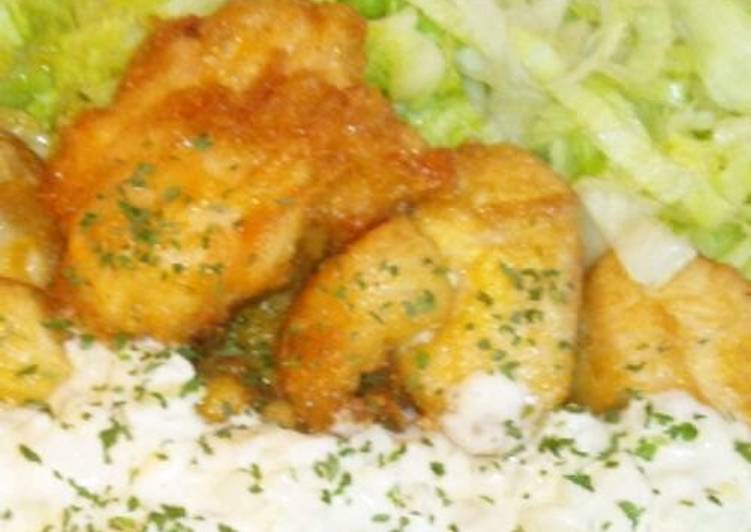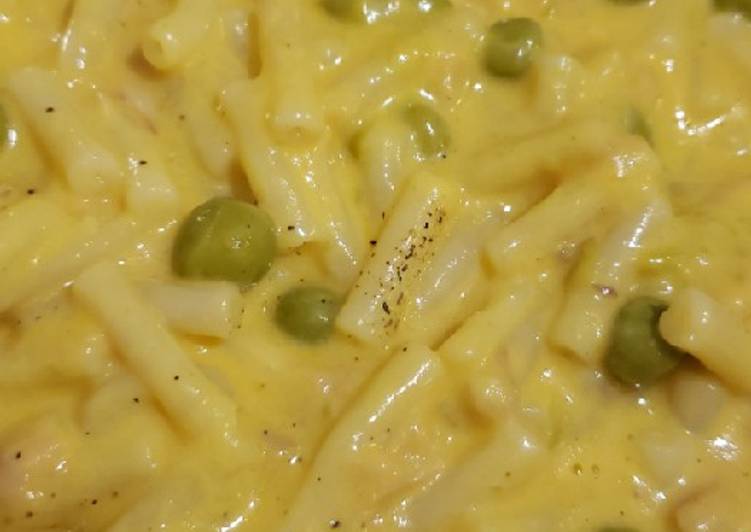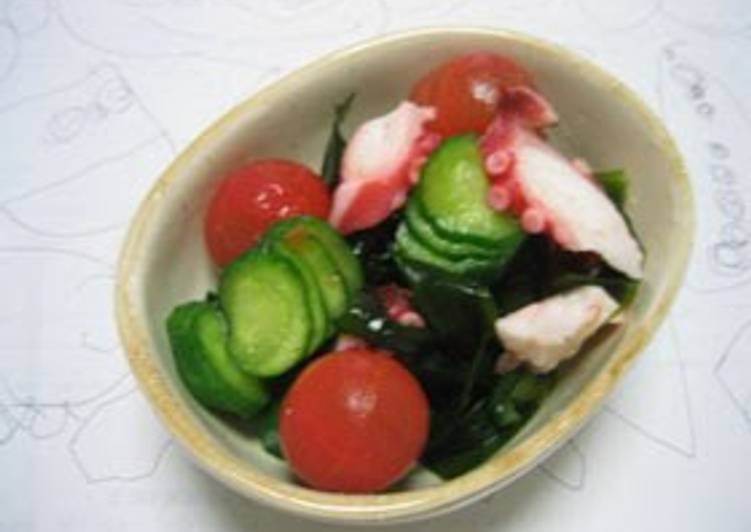
Hello everybody, I hope you’re having an incredible day today. Today, I will show you a way to prepare a distinctive dish, easy chicken nanban with sushi vinegar and tartar sauce. One of my favorites food recipes. This time, I am going to make it a bit tasty. This is gonna smell and look delicious.
Easy Chicken Nanban with Sushi Vinegar and Tartar Sauce is one of the most favored of recent trending meals in the world. It is appreciated by millions daily. It’s easy, it is fast, it tastes delicious. They are nice and they look fantastic. Easy Chicken Nanban with Sushi Vinegar and Tartar Sauce is something which I have loved my entire life.
Today I made chicken nanban which is sweet vinegar chicken with tartar sauce. 【Real Japanese Sushi】This is how to make real Japanese sushi at home! Chicken Nanban is always served with a side of Japanese tartar sauce, and it usually includes some thinly shredded cabbage on the side. In Japan, Chicken Nanban is usually prepared using skin-on boneless chicken leg, which includes the meat from the thigh and drumstick in one piece.
To begin with this particular recipe, we must prepare a few components. You can have easy chicken nanban with sushi vinegar and tartar sauce using 14 ingredients and 10 steps. Here is how you can achieve it.
The ingredients needed to make Easy Chicken Nanban with Sushi Vinegar and Tartar Sauce:
- Prepare 300 grams Chicken breast
- Get 1 Salt
- Take 1 Pepper
- Take 1 Plain flour
- Make ready 1 Egg
- Prepare Sweet vinegar sauce
- Take 100 ml Sushi vinegar
- Take 2 tsp Soy sauce
- Make ready Tartar Sauce
- Make ready 50 grams Store-bought tartar sauce
- Prepare 3 tbsp Marinated onion
- Prepare 1 tbsp Milk
- Get Accompaniments:
- Get 1 Vegetables of your choice
The chicken is lightly battered and fried, then dipped in sweet and sour sauce just like Nanbanzuke, marinaded fried fish with vegetables. Chicken Nanban is a regional cuisine from Miyazaki Prefecture in Kyushu Island (most southwesterly of Japan's four main islands) but now I usually serve Chicken Nanban with eggplant and bell pepper (eggplant is a must!). If you can find shiso leaves (Perilla) in Japanese or Korean supermarket, I. Japanese fried chicken fillets marinated in sweet-sour sauce and served with tartar sauce made with crushed hard-boiled eggs.
Instructions to make Easy Chicken Nanban with Sushi Vinegar and Tartar Sauce:
- Slice the chicken diagonally.
- Sprinkle with salt and pepper, and coat with plain flour.
- Break the egg into a bowl and beat well.
- Dip the chicken in the beaten egg.
- Deep-fry the chicken in 170℃ oil until golden brown. Drain off the excess oil.
- Make the sweet vinegar sauce. Combine the sushi vinegar and soy sauce.
- Marinate the chicken in the sweet vinegar sauce while it's still hot. I put the chicken and the sauce in a plastic container, close with a lid, and lightly shake the container to mix it together.
- Marinate the chicken for about 2 minutes. Shake the container lightly from time to time to allow the flavors to penetrate the chicken.
- Make the tartar sauce. Add the marinated onion and milk to the tartar sauce and mix together.
- Serve the chicken with the vegetables on a serving plate. Pour on a generous amount of tartar sauce and it's ready.
Unlike most fried chicken recipes that start with marinating, chicken nanban fillets are marinated after frying. Maybe, but the result is delicious. Nanban sauce or vinegar is most commonly used for nanban dishes. Coat the chicken with flour,then beaten egg. Add ■ingredients,sugar,soy sauce,vinegar and mix(Nanban vinegar).
So that’s going to wrap this up with this special food easy chicken nanban with sushi vinegar and tartar sauce recipe. Thanks so much for your time. I’m sure you can make this at home. There is gonna be more interesting food at home recipes coming up. Don’t forget to bookmark this page in your browser, and share it to your loved ones, colleague and friends. Thank you for reading. Go on get cooking!


